Product Strategy Framework: 9 Steps to Reach Your Product Goals
A product strategy framework helps you develop a product that reflects your vision and goals. This can be achieved by creating and sticking to a well-defined product strategy.
Most companies create a product strategy to shape the vision and execution of a product. Developing a product strategy involves envisioning the product’s entirety and its purpose. It enables companies to communicate the value and user benefits of their product.
In a well-tuned product strategy framework, everyone is on the same page and working towards high-level business goals.
During product development, your product strategy framework must prioritise key elements like features and timelines. It guarantees that your product management efforts concentrate on customer needs, market positioning, and ultimate business goals. Placing value at the forefront ensures a product launch that stays true to your original vision for every feature.
Table of Contents
- What is product strategy?
- Importance of product strategy framework
- Types of product strategy
- How to develop a successful product strategy framework
- #1. Establish a comprehensive product vision statement
- #2. Gain a deep understanding of your customers
- #3. Know your product’s position in the market landscape
- #4. Remain flexible and ready for adaptation
- #5. Develop a product roadmap
- #6. Convey your strategy
- #7. Execute your plan
- #8. Don’t wait for engagement. Create one!
- #9. Prepare to adapt
- Conclusion
- Machine Learning In Finance: 12 Essential Applications
- How To Create Interactive Compliance Training For Bank Employees
- How Fintech Apps Are Using Gamification To Increase User Engagement
- Top Gamification Companies for Employee & Customer Engagement
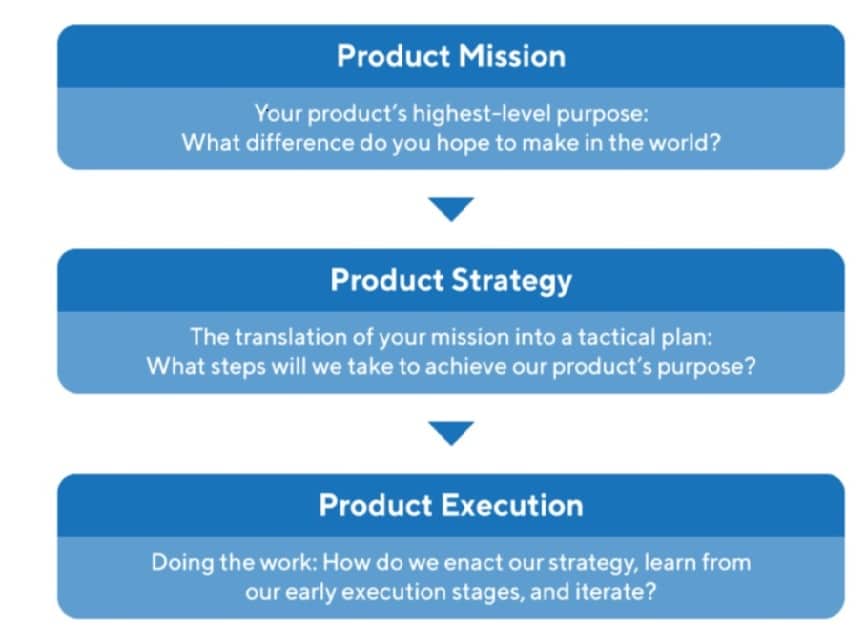
Source: productplan
Are you a product leader looking to inspire and guide your team? Or a product manager eager to effectively execute your plan? Or an entrepreneur preparing for pivotal decisions ahead?
No matter where you stand, know that you’re not alone. Product strategy is often elusively perceived, with no set definition or established approach.
In this guide, we aim to demystify product strategy. We will outline a product strategy framework to assist you in guiding your team to success.
What is product strategy?
Product strategy acts as a bridge, closing the gap between a product’s conceptualisation and a development plan’s creation. You could be harbouring a fantastic new idea for the future game-changer product. However, turning ideas into paper can be challenging.
Product strategy sets principles to support product development and success. It enables companies to respond to three crucial inquiries about their product:
- Who is the target market?
- How will the product effectively mitigate the pain points experienced by these customers?
- How will the product help the company gain a competitive advantage in the market?
The responses to these questions will determine the product’s initial high-level planning. The big-picture strategies entail the product’s features, development plans, and measurable objectives.
There is often confusion between product strategy and product roadmap. But, a roadmap is a timeline of actionable tasks that outlines how to bring the product to its completion. The success of roadmaps relies on a clear product strategy that entails an established vision, timelines, and goals.
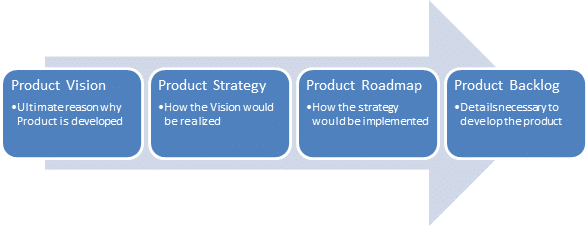
Source: worldofagile
The product strategy guides the development process as the product roadmap evolves. In product development, deadlines, tasks, and goals often change. By staying committed to a specific strategy, a company enhances its ability to handle changes and devise solutions that align with the product’s ultimate vision.
A product strategy establishes a durable and adaptable decision-making framework for long-term success. It guides the business model, teams, individuals, and organisational culture.
A good product strategy begins with an enduring, high-level purpose that seldom changes. Then the focus shifts to the dynamic execution of self-organising teams, adapting to frequent changes. A good strategy provides teams with motivation and a better sense of clarity.
Importance of product strategy framework
#1. It establishes the identity and niche of your product
A well-researched product strategy offers companies a clear sense of their product’s market niche. This awareness helps teams make niche-oriented decisions during development for their target audience.
Think of your product’s niche as a triangle.
You have the customers you wish to serve at one end. You have the profit-oriented goals of your company on the other end. You have your product’s distinct functions and features that differentiate it from competitors on the third and final end.
Product strategy helps define these points and align them against each other. Regardless of its thousand features, a product without a target audience won’t sell. You cannot capture an audience by imposing prices far above your competitors.
#2. It sets the stage for the creation of the product roadmap
Your product roadmap is a blueprint for your product’s development, release, and growth. The roadmap should leave no uncertainty in expressing objectives. It should also serve as a reliable guide to inform decisions and actions aiming to achieve success.
Development hiccups can result in changes to the action items listed on the roadmap. But, all parties involved should be able to acknowledge those changes.
Your product strategy builds the foundation of your product roadmap. This strategy sets deadlines and development stages, while the roadmap details execution methods.
The roadmap you start with will likely look different when it reaches completion. But, a roadmap that relies on a clear product strategy framework will require fewer changes than one without a strategy.
Having a well-defined vision ensures that your team will work together to achieve the same goals.
#3. It brings a better sense of clarity to your product team
It brings clarity by specifying what falls within the scope and what lies out of it to your product team.
You can maximise your product development team’s potential with a well-defined product strategy framework. A clear product strategy framework allows your team to understand how the product will contribute to your objectives thoroughly.
A product strategy framework provides sales and marketing teams with improved insight into the product’s unique selling proposition. It also allows them to communicate the product’s benefits to the end consumer.
Aligning your goals is a collective effort involving individuals beyond your product team. Everyone in your company collectively contributes to fostering your product’s success.
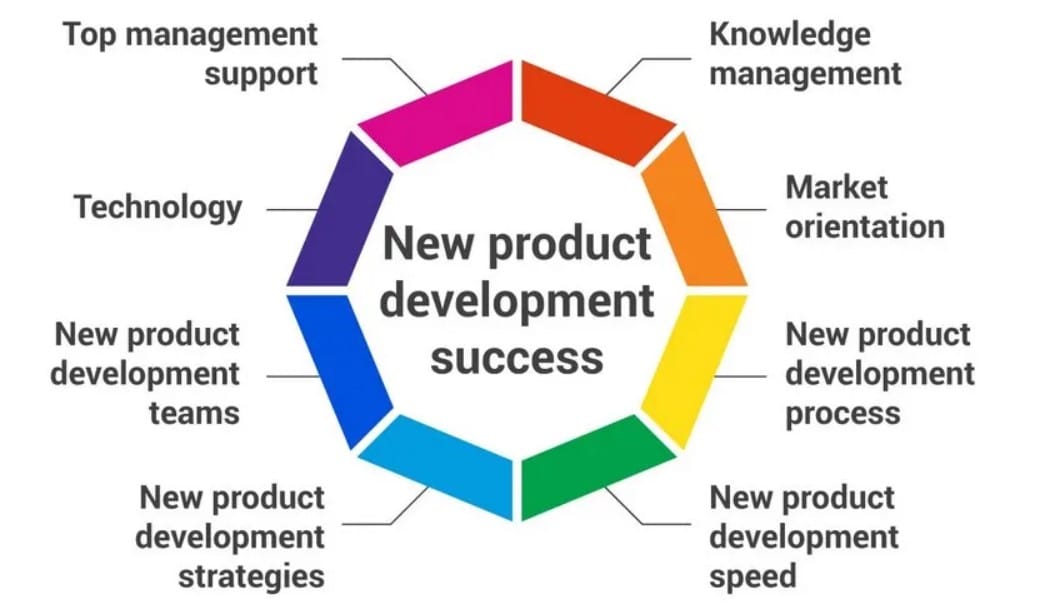
Source: interaction-design
Sales teams must possess skills to discuss the product’s value with high-impact prospects. IT and customer service teams should be well-acquainted with its functionality to handle user inquiries. Internal policies for customer interactions should align with the points outlined in your product strategy to ensure consistent communications.
Types of product strategy
There are four main categories of product strategy. These are product development, product launch, product marketing, and product lifecycle extension.
#1. Product development strategy
Your product development strategy relies on creating or modifying existing products. It can also mean extending the product’s presence into other markets. A well-executed product strategy framework can drive sales growth and boost market share.
#2. Product launch strategy
Your product launch strategy seeks to increase user adoption and cultivate brand expansion. It follows a linear path, sharing and introducing a new product or feature to your current user base. You can communicate this through email campaigns and social media posts.
#3. Product marketing strategy
Your product marketing strategy is a roadmap that reflects your plan for your product’s position, price, and promotion. It provides insights into where and how to reach your loyal customers.
Align your product marketing strategy with the product development lifecycle to guide marketing from development to growth.
#4. Product life cycle extension strategy
A product life cycle extension strategy is an action you take when your product enters the decline stage of its lifespan. Your product life cycle extension strategy specifies the measures you will take to extend the lifespan of your product. You can do this by maintaining it at its maturity stage and ultimately increasing sales.
How to develop a successful product strategy framework
#1. Establish a comprehensive product vision statement
Your product vision is an aspirational statement that naturally flows with your business’s mission or vision. It clarifies why your product matters, your intended aspirations, and the value it brings to your target customers.
Kickstart the process by defining your product vision before embarking on the strategy mapping. Imagine how it will improve your users’ lives, bring value to the market, or create a lasting impact. Be bolder and pursue ambitious goals.
In other words, ensure you drive your actions with a profound and meaningful purpose. A vision statement should embody a boldness and unyielding drive for greatness.
You can examine your product vision’s strengths, weaknesses, opportunities, and threats through a SWOT analysis.
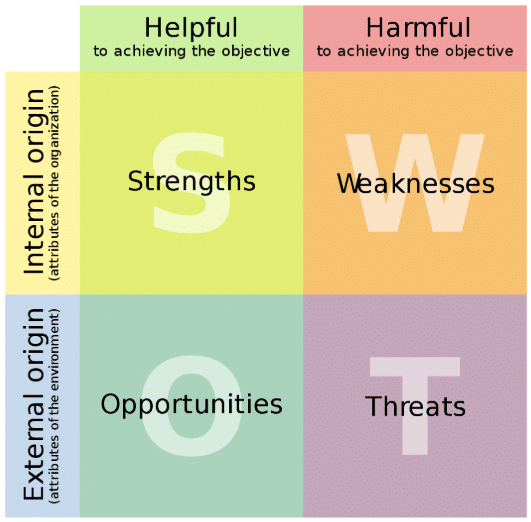
Source: medium
#2. Gain a deep understanding of your customers
To fully understand your customers, you must understand the market dynamics to devise an effective product strategy. Do some market research. The goal is to delve into customer analysis to know and understand your target customer.
Construct an extensive consumer profile. Find out their goals, how they define success, the issues they are struggling with, and the challenges they encounter. This endeavour will assist you in delving into your customers’ goals, needs, challenges, and willingness to spend in discovering solutions.
These insights provide you with a better knowledge of how effectively your product satisfies the demands of your consumers. You will also understand how your product makes a difference in their lives and offer a value proposition.
#3. Know your product’s position in the market landscape
An efficient positioning statement should encompass your product’s description, its target audience, and how it responds to market demand.
Recognise that your product exists within the scope of your users’ lives; it is not separate. It is necessary to understand this larger context to comprehend how your product fits in and expect obstacles.
#4. Remain flexible and ready for adaptation
By analysing similar trends and patterns in different markets, you can gain deeper insights into market dynamics and how they may evolve. Be proactive in identifying potential shifts within your market and plan adaptive strategies to stay ahead. Then you can use the knowledge you’ve acquired to predict possible changes.
By doing this, you can adapt and refine your strategy accordingly.
#5. Develop a product roadmap
Your product roadmap handles overseeing tasks and ensuring the timely completion of deadlines. Your product roadmap should always align with and derive from your product strategy.
The roadmap should reflect your product’s development, release, and scale. Your roadmap should also incorporate strategic reasoning for your product.
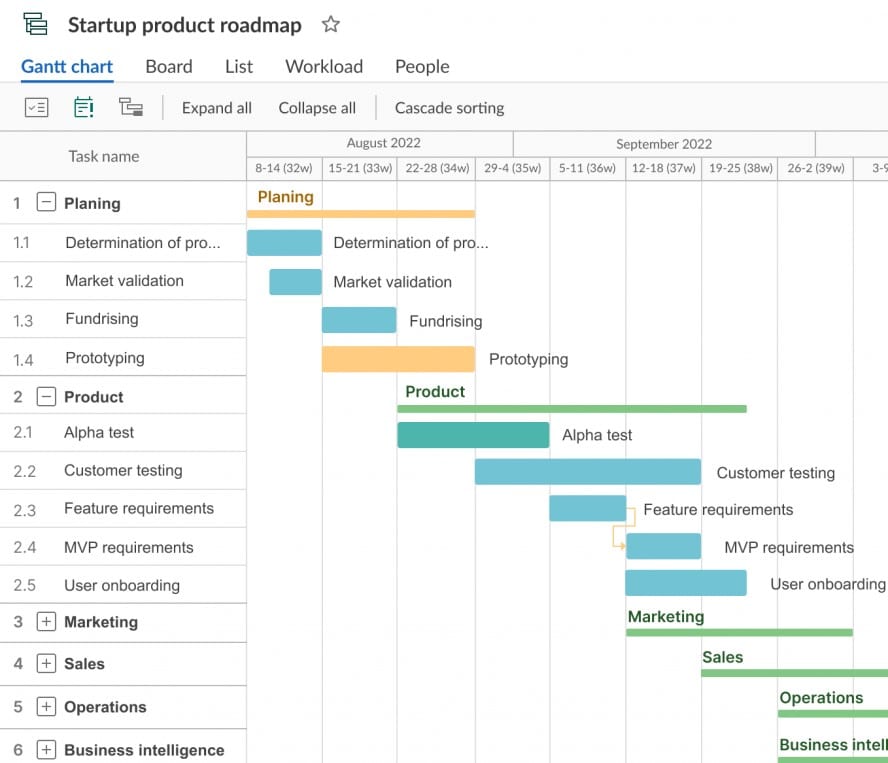
Source: ganttpro
You can acknowledge your competition’s presence, but do not let them dictate your roadmap. Focus instead on defining your market niche.
Are your competitors addressing the same problem as your product with a similar strategy? If so, what strategies can you employ to distinguish your product from the competition?
Seek out untapped market niches and potential avenues for growth. Craft your product roadmap and strategy to fill that gap in the market.
#6. Convey your strategy
Upon completing your product roadmap, convey your product strategy to the entire team, including all relevant stakeholders.
Concentrate on the primary objectives and fulfil the essential milestones that drive progress. Tap into the potential of your roadmap by using it to convey your strategy and goals. Discuss and dispute your product strategy framework with your cross-functional team members.
Are your strategy and vision persuasive? Is there enough cash flow to invest in development? If not, what specific areas need improvement?
Do they warrant a more thorough evaluation? If so, begin executing your plan.
#7. Execute your plan
It is now the moment for your team to convert your strategic steps into tangible and actionable tasks. You can then proceed to build the prototypes of the product. This process may involve engaging your UX team to craft mockups and your developers to construct working product prototypes.
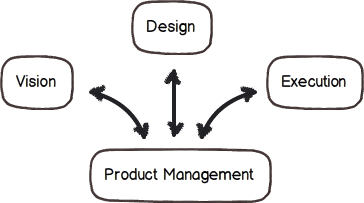
Source: sachinrekhi
During the execution of your strategy, the aim is to provide a preview of the product’s envisioned capabilities and how it can address the problems of your end users.
Use a product prototype that acts as a tool to gauge their interest and gather thoughts and other feedback. This information can assist you in making an informed decision about your next move.
#8. Don’t wait for engagement. Create one!
For the success of your execution, boosting user engagement is important. Some of the best practices to increase engagement include:
Build customer relationships through communication.
Regular updates and communication can enhance engagement and attract new customers. Understand how they like to be communicated with and know the best way to reach them. Some of the best methods of communication are:
- Newsletters – Provide product updates through regular newsletters and email blasts.
- Surveys – Ask for customer feedback to make their opinions feel valued and heard.
- Live chat – Make customer service readily available and at the tip of their fingers through live chat support.
Focus on continuous improvement
Your brand must focus on always making an effort to improve your products. Continuous improvement is a process of identifying opportunities within your products and implementing them. You can achieve this by:
- Sharing measurable goals, establishing opportunities, and tracking progress.
- Communicating best practices within your product team and across departments.
- Identifying and implementing adequate improvement opportunities
Through continuous improvement, you can set a standard for your product and a good reputation for your brand.
Gamify your business
Gamification is a strategy used by digital companies that take their product execution to the next level. It’s applying game-like techniques to existing software to encourage user engagement.
This strategy combines multiple techniques that make the process fun and satisfying. You can use gamification to achieve your desired traffic, engagement, and conversions upon execution.
The real value of applying gamification strategies to your product strategy framework is that it makes your product enjoyable. This keeps your users interested enough to explore the features of your product and find value in it.
Once users find value in your product, you can expect them to recommend it and even update their subscription. Something as simple as badges and prizes, when they sign up, encourages them to engage repeatedly. This enforces positive behaviour and sets a pattern for engagement.
#9. Prepare to adapt
The last, yet equally vital, stage involves measuring and evaluating your progress. Measuring progress creates the space to correct and make necessary adjustments.
Using actual data as the basis for your product strategy provides a better opportunity for your product to excel. The more solidly grounded your product strategy is in actual data, the better its chances for success in the market. Therefore, creating a two-way flow of ideas between your team and your users is necessary during your product strategy development.
In every phase of the product strategy framework, actively seek user feedback and compare it to your existing strategy.
If your product evokes a favourable reaction from potential customers, you can stay on track. If your users point you in the other direction, you can find a different path to introduce changes. You can then adapt your strategy to achieve your product’s mission.
Conclusion
The primary goal of a product strategy framework is to ensure stability throughout the product development process. Frequent strategy changes erode its effectiveness in providing reliable guidelines and expectations for your teams during product development.
Your product strategy framework should undergo regular evaluation. Even the most well-constructed plans will veer off course now and then. Periodic product evaluations create openings to rectify instances of strategy drift.
Furthermore, creating a product strategy framework must remain an iterative process. It is necessary to review your latest product strategy once you finish your product’s most recent plan.
The knowledge acquired through a meticulous analysis of successes and failures will aid in constructing future product strategies. Strategies that are even more effective and can lead to the development of more successful products.
With gamification, you can reach the goal of your product strategy framework and develop a high-quality product for your brand. Our experts at Mambo are here to help you reach your goals. Book a demo today!
Latest Posts
Machine Learning In Finance: 12 Essential Applications
The impact of machine learning on finance is significant. Thanks to this technology, financial institutions are now equipped to make efficient decisions. Through the analysis of data sets, machine learning […]
How To Create Interactive Compliance Training For Bank Employees
Banking compliance training isn’t just another task. It’s the stage where everything else performs. Banks must navigate a myriad of regulations and laws. After all, this is a trust-driven, high-stakes […]
How Fintech Apps Are Using Gamification To Increase User Engagement
Discover how gamification in fintech is revolutionizing financial engagement, making banking fun & boosting user loyalty.




